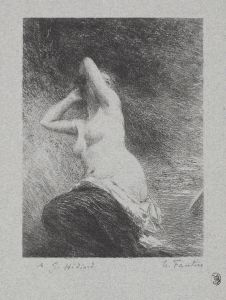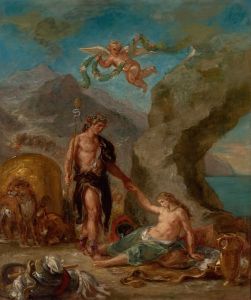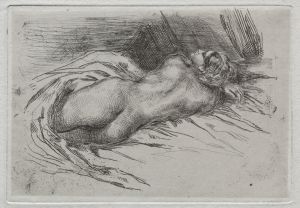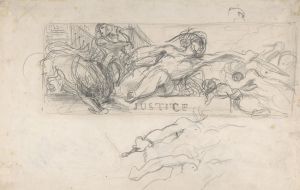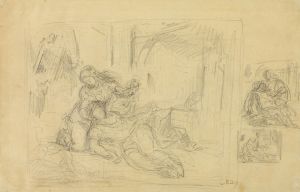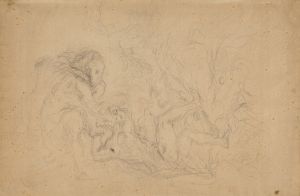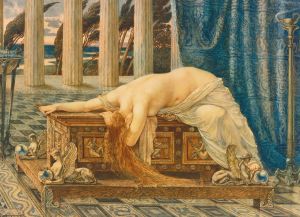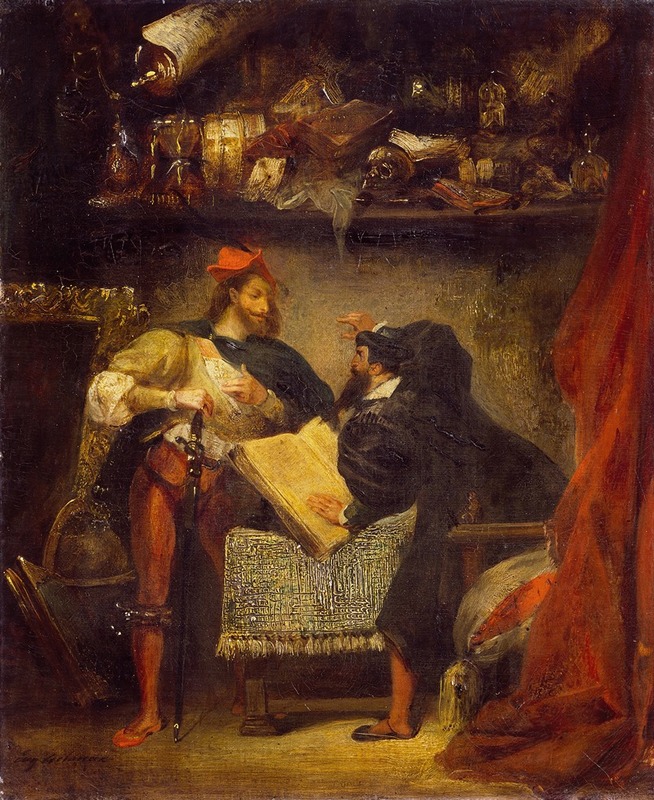
Faust and Mephistopheles
A hand-painted replica of Eugène Delacroix’s masterpiece Faust and Mephistopheles, meticulously crafted by professional artists to capture the true essence of the original. Each piece is created with museum-quality canvas and rare mineral pigments, carefully painted by experienced artists with delicate brushstrokes and rich, layered colors to perfectly recreate the texture of the original artwork. Unlike machine-printed reproductions, this hand-painted version brings the painting to life, infused with the artist’s emotions and skill in every stroke. Whether for personal collection or home decoration, it instantly elevates the artistic atmosphere of any space.
Eugène Delacroix, a leading figure of the French Romantic movement, is renowned for his vivid and expressive use of color and his dynamic compositions. Among his many works, "Faust and Mephistopheles" stands out as a significant piece that reflects his fascination with literature and the human condition. This painting is inspired by Johann Wolfgang von Goethe's "Faust," a dramatic work that explores themes of ambition, desire, and the eternal struggle between good and evil.
Delacroix's "Faust and Mephistopheles" captures a pivotal moment from Goethe's narrative, where the scholar Faust, in his quest for infinite knowledge and worldly pleasures, makes a pact with the devilish Mephistopheles. This agreement sets Faust on a journey filled with moral dilemmas and existential questions. Delacroix, known for his ability to convey intense emotion and drama, uses this subject to explore the complex interplay between light and shadow, both literally and metaphorically.
The painting is characterized by Delacroix's signature style, which includes bold brushstrokes and a rich, vibrant palette. His use of color and light serves to heighten the tension between the two characters. Mephistopheles is often depicted with a sinister, almost otherworldly presence, emphasizing his role as the tempter and antagonist. In contrast, Faust is portrayed with a sense of inner turmoil and conflict, reflecting his struggle with the moral implications of his choices.
Delacroix's interest in the Faustian legend was not limited to this single painting. He created a series of lithographs and other artworks based on Goethe's play, each exploring different scenes and characters. This body of work demonstrates Delacroix's deep engagement with literary themes and his ability to translate complex narratives into visual form.
The Romantic era, during which Delacroix worked, was marked by a fascination with the sublime, the mysterious, and the emotional depths of the human experience. "Faust and Mephistopheles" embodies these characteristics, as it delves into the darker aspects of human nature and the consequences of unchecked ambition. Delacroix's portrayal of these themes resonates with the Romantic ideal of the artist as a visionary, capable of capturing the essence of the human soul.
Delacroix's contribution to art extends beyond his individual works; he influenced a generation of artists who followed him. His innovative use of color and expressive technique paved the way for later movements, such as Impressionism and Symbolism. "Faust and Mephistopheles" is a testament to his enduring legacy and his ability to convey profound philosophical ideas through the medium of painting.
Today, Delacroix's works, including "Faust and Mephistopheles," are celebrated for their emotional depth and technical mastery. They continue to be studied and admired for their contribution to the Romantic movement and their exploration of timeless themes. Through his art, Delacroix invites viewers to reflect on the complexities of human nature and the eternal struggle between light and darkness.





